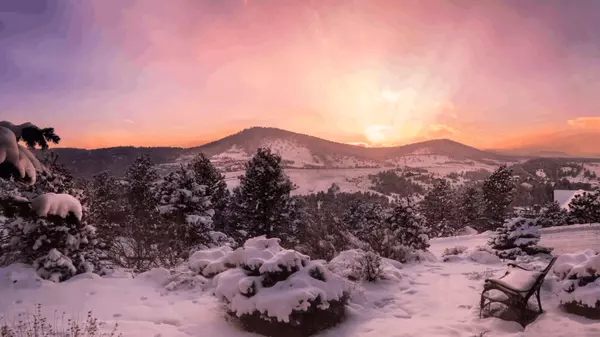Seller Move-Out Checklist

As closing approaches you may find yourself moving before the sale is finalized with a buyer. To ensure a smooth handoff to the buyer whether you’re still in town or not, you'll need to make sure you have completed everything you are supposed to—from negotiated terms to good seller etiquette. There are certain things that every responsible seller should do, and you can make sure you accomplish them all if you make a home-selling checklist.
Your closing checklist is a guide for your actions after all of your personal belongings and furniture have been removed from your home. This includes
- Clean the house
- Preparing the house to be vacant
- Be sure to close any relevant utility accounts
- Securing the property
- Change your address with the post office
Customary Expectations
Most Sellers are good about leaving a home in presentable condition for the new Buyer. It’s understandable that after moving all day, sellers may be too tired to spend a lot of time cleaning, so it's a good idea to move one day and clean the next, leaving an extra day before closing when possible. An alternative would be to hire a cleaning service to do a thorough deep cleaning.
Clean the House
If you don't have time to personally clean the home before leaving it, hire a professional cleaning service to do so. What makes a house clean enough is often a matter of opinion and personal preference. It's not always necessary to shampoo the carpets, but it's a nice touch. Clean the cabinets, refrigerators, and other appliances inside and out. Make sure the home is devoid of any trash and debris. Don’t leave personal property of any kind behind, except for what’s already been negotiated. Don’t forget the exterior: mow, rake, clear snow, clean up after pets, etc. We have a list below that will give you a good idea of what specifics matter.
The Golden Rule
The best way to ensure a worry-free final walkthrough is to follow the Golden Rule which is, of course: do unto others as you would have others do unto you.
In other words, leave your home the way you would like to find it if you were the buyer. Don’t leave any room for interpretation of what is acceptable. And, it doesn't hurt to make your last impression on the buyer a good one with little touches (like polishing sink fixtures). The last thing you want is a threat from the buyer to not close based on the condition you left the property. If you leave it so there’s no room for complaint, then you likely won’t get complaints from the buyer.
Cleaning List
While many Buyers will clean the home to their own standards before moving in, regardless of a Sellers’ own cleaning efforts, there is a list of things a Seller can do to leave a home clean and create goodwill with the Buyer. This list is not comprehensive, but it will serve to get you started. Use your judgment for anything else that might need to be done.
- Remove all personal property.
- Throw away trash and debris.
- Vacuum the carpets & floors,sweep & mop tiled areas.
- Clean kitchen appliances, inside the refrigerator and oven, and wipe down counters.
- Scour sinks and tubs.
- Wipe down interior cabinets and shelves.
- Clean out the garage.
- Clean up after pets.
- As best you can, leave the yard in the condition it was in in your listing photos.
- Don’t forget your patio/lawn furniture, gas grill, etc.
- Stack items pertaining to the home such as paint cans, roofing materials or extra flooring and leave them for the new buyer, ONLY if they want them. If they don’t expressly want them, plan to have them removed.
- Leave the home in the condition you would hope to find it in if you were moving in.
Preparing Your Home to be Vacant
For some, peace of mind comes from leaving a house winterized so that you can neutralize the threat for potential water leaks, etc. If that’s you, you're going to want to turn off shut-off valves to sinks, toilets, dishwashers, the water heater, refrigerator and washing machine. Leave a note for the buyers so they won't call a plumber. Turn off all switches for lights and fans. Some sellers flip all of the circuit breakers to the “off” position. This might be overdoing it, but it keeps them from paying for any electricity until the account is switched. In most cases, we don’t recommend this approach.
However, if the house has to be shown again or inspected, you’ll want the house to still be functional, and walking into a house that is literally cold, can leave a cold feeling with a new buyer. If they can’t turn on lights or test fans, then it’s tough for them to see how the house functions. Inspectors are not allowed to open valves and flip breakers, so we recommend leaving them on. One solution to make sure pipes don’t freeze is to leave the temperature set at 50° or even 55°. That way the house isn’t being heated to comfortable room temperature when no one is there, but the pipes won’t freeze either. It’s up to you. Having water running is important for any inspection but not necessary for showings. Having power to the home, in our opinion, is highly advisable, however.
Utility Accounts
Once the property sale has closed, you can cancel all the utilities. But, as mentioned above, you won’t want to turn off electricity or gas until the sale has been completed.
In the meantime you can discontinue services such as cable, internet, newspaper, and other routine delivery services. It’s up to your discretion whether or not to discontinue security.
Be sure you can find phone numbers for each of your utility and entertainment companies in advance. Keep in mind that not every utility is always paid monthly. You might have a refund coming, have to pay a balance, or be able to transfer the balance to your next home.
Necessary Incidentals
Leave all house keys, remotes, gate keys, pool keys, access fobs, and mailbox keys for the new owner. The buyers will probably change the locks, but that won't happen the instant they move in. Put them in a kitchen drawer or other location that is easily found and let us know where the buyers can find them.
Assemble a packet of appliance manuals, receipts, and any warranties as well. You might have come across manuals for the HVAC, security system, sprinkler system, or appliances as you are packing. If you have receipts from contractors, warranties, put them into an envelope or box, and leave them in a cupboard as well, along with the manuals and codes for the security alarms, garage or door openers, etc.
What to Leave Behind - Inclusions & Exclusions
If you need a refresher about what constitutes an inclusion versus an exclusion, check our educational video on the matter here. Don’t forget to make sure all items that are in the contract DO convey with the house. You should also consult your real estate contract before removing some items from the home. These may include “fixtures” – anything not already glued, screwed, taped or nailed to the house, rather easily removed from the walls or ceiling – such as curtain rods, window treatments, light fixtures, light bulbs, etc. Your real estate buy/sell contract may state that fixtures are to convey with the house. Do you remember what you agreed to in the contract? If you aren’t sure – just ask.
Check cabinets, drawers, and storage areas for any forgotten items. Run one more check, even if your spouse or friend says they've gone through every room with a fine-tooth comb, searching for anything you might have overlooked.
As mentioned above, you should obviously leave anything you’ve agreed to leave (by contract) for the buyers. But don’t be tempted to leave things you think they’ll want. Only leave things you know they want or are expecting. Sellers with the best of intentions may think to leave things such as paint for touch-ups, even when they’re properly labeled, may find that the buyers don’t want them and feel like they’ve been burdened with removal of those items after closing. That’s not what you want.
Construction materials such as matching carpet swatches and pieces of flooring may be left with the best intentions, but again, the buyer may not want them. Don’t leave them unless you’re sure they’re wanted.
Items such as mowers and snow blowers, might have value to you, and thus, you feel it’s a nice gesture to leave them to the buyers, but if they don’t want them it becomes a disposal burden they didn’t sign up for and may cause waves at a final walkthrough.
Lock Up on Your Way Out
Close the blinds and lock the windows and doors. You'd be amazed at how many people forget to close up the house. It is especially important to lock up if the home is going to be vacant for a while. Consider leaving an inexpensive lamp behind on a timer.
FAQs
Q: When should I cancel utilities when selling a home?
A: You can call in advance to set up a cancellation for your utilities, but be sure not to have your utilities turned off until after you officially close on the sale. You will need your utilities on throughout the selling process, and, as mentioned above, an early shutoff could cause problems.
Q: Many Sellers ask me “So how clean is clean enough?”
A: The bottom line is leave the home in the condition you’d want to find it in if you were the buyer, which is “move-in ready.” Does that phrase leave room for interpretation? Think of it this way, just be sure that you leave it in the condition that would give the buyers no room to grovel, or complain or even reject it at a final walkthrough prior to closing.
Don’t Forget…
Lastly, keep in mind that some of your mail and package deliveries might come to the Buyers after you leave, and you’ll want them to forward it on or allow you to pick it up. Besides the fact that you will create goodwill, it is the right thing to do. Once closing concludes, it may make sense to exchange contact information (buyers and sellers) in case deliveries come up after closing that need to be redirected.
Categories
- All Blogs (60)
- advice (18)
- broomfield colorado (1)
- buying land (1)
- client experience (8)
- colorado (11)
- commerce city colorado (2)
- denver metro area (12)
- ELEVATE newsletter (14)
- FAQs (1)
- firestone colorado (1)
- first-time homebuyers (8)
- foothills properties (1)
- for sellers (8)
- home improvements (1)
- home valuation (1)
- homebuyers (21)
- homebuying in 2024 (11)
- inflation (4)
- interior design & decor (1)
- investing/investors (3)
- land surveys (2)
- local news (11)
- market updates (1)
- matt thomas (3)
- monthly housing updates (7)
- mortgage interest rates (12)
- mortgage lending (8)
- mountain properties (1)
- moving (2)
- national news (9)
- negotiations (2)
- open houses (1)
- opinion (2)
- press release (3)
- property management (2)
- property taxes (2)
- radon (1)
- ReaL Broker (2)
- relocating (4)
- remote homebuying (1)
- rentals (1)
- renting (1)
- senior homeowners (2)
- showings (3)
- the altitude group (4)
- thornton colorado (3)
- videos (4)
- vocabulary (4)
Recent Posts










GET MORE INFORMATION
Consultant | Broker Associate | FA100030130
